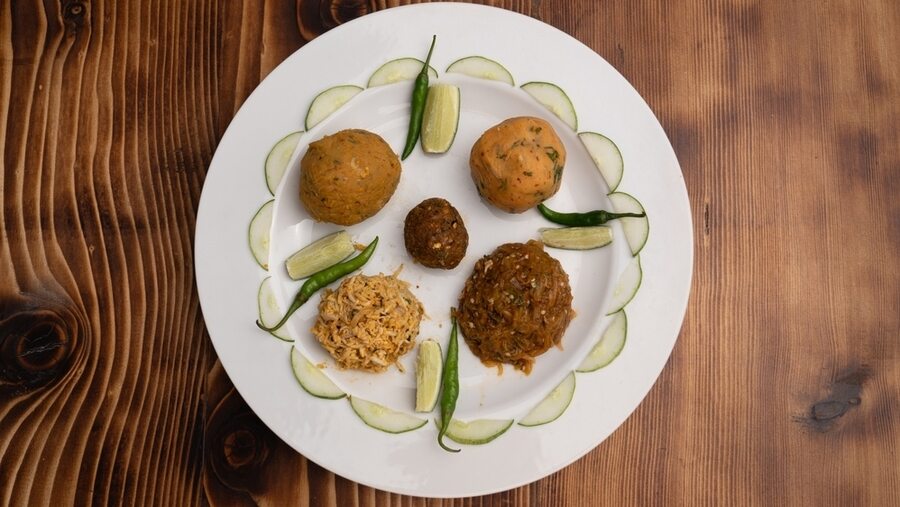The story of the rise in popularity of the Bangali bhorta is the story of how the humble man’s food became a celebrated restaurant-quality dish. The indigenous, and largely rural, dish has now acquired a place in global gourmet meals. From blogs and YouTube channels to cloud kitchens, international cookery shows and well-known restaurants, the bhorta is one of the most talked about Bengali dishes.
So, what is ‘bhorta’?
The concept of sustainable eating has been a part of Bengali cuisine for a long time. Be it bhorta, bhaate bhaat, makha or bata, this mash-like preparation often uses parts of the produce like peels and leaves.
Bhorta has its origins in opar Bangla, modern-day Bangladesh. On the Indian side (West Bengal) the bhaate bhaat or bata is more popular. The preparation of these dishes is similar. The ingredients are cooked (often in the same pot as the rice) or roasted and then mashed. A bata usually has a more paste-like consistency and is mashed or ground using a traditional mortar-pestle or shil noda, or even mixers in today’s time. Much like the preparation, the concept behind these dishes is also universal — feeding the family a wholesome meal with limited resources. Any vegetable, fish, even spices like turmeric and kalo jeere (kalonji or Nigella seeds) can be cooked into a bhorta. The dishes, from the makha to the bata, are also always made solely by hand — the ingredients are mashed or ground and mixed, traditionally by hand.
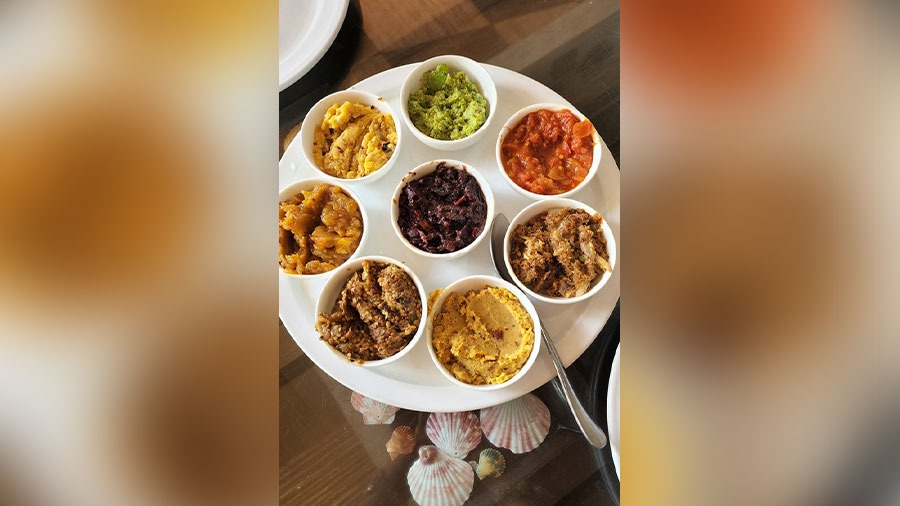
‘Bhorta’, ‘makha’, ‘bata’, are similar and popular dishes in the cuisine of Bengal, and made with myriad ingredients from vegetables and their peels to fish and meat
ShutterstockThe word bhorta , bharta or bhurta comes from the Sanskrit word bharj, meaning food that is fried or roasted. In a bhorta, the vegetable or fish or even meat, is either boiled, roasted on an open flame, or fried and then mixed with roasted/fried garlic, fried onions, fried red chillies, and a dash of mustard oil. The food that was typically made out of necessity and convenience has now become a delectable plate with different variations and various ingredients added to it.
The types of bhorta, makha or bata, depend on the region, produce and flavours of the region. For example, in the Mawa region of Bangladesh, a popular dish is the ilish maachher lejar bhorta made with the tail of the hilsa. Thakurbarir Ranna (Food from the Tagore kitchen) by Purnima Thakur also mentions different kinds of bhorta. The recipe book written by Pragya Sundari Devi also has recipes like oler (yam) bhorta, helencha shak (watercress) bhorta, kaanchkola (green, unripe banana) bhorta and many more. In the book she says:
‘Bhaate koro siddho
Aagune purao
Jhal tok mekhe
Ruchi kore khao’
(Cook it with rice/ Roast it on a flame/ Mix it with spice and sour flavours/ And savour your dish)
To delve a little deeper into the saga of the bhorta, My Kolkata spoke to three food specialists about this simple, yet trendy dish.
Koyel Roy Nandi, chef, Sienna Store and Cafe
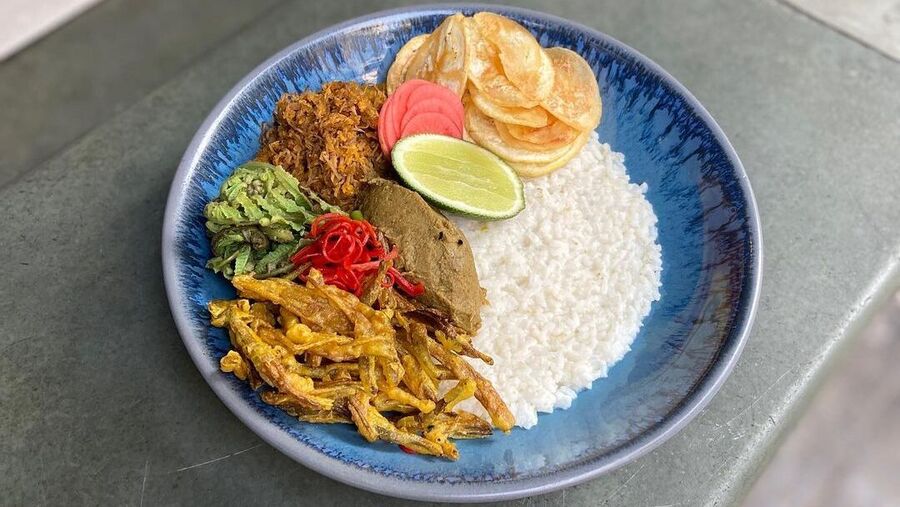
Chinekamini Bhaat, Mocha Bhaja, Kanchkola’r Khosha Bata, Thor Chorchori & Kanchkola Chips
@sienna_store/InstagramBhorta is a popular dish, especially in Bangladesh and also embodies the concept of zero waste, which has been in our food tradition. At Sienna, we believe in sustainable food, and the peels of the vegetables are not wasted. We often make them into a bata or bhorta. The ingredients depend on the season and the kind of bhorta I want to make. Generally, whole dried red chilli and garlic is used, and onion is used in non-vegetarian preparations. You also have other ingredients, like for a kochu (taro) bhorta, coconut and mustard is used. When making a bata with vegetables, I usually use kalo jeere, garlic and green chillies. In summer, we will usually use vegetables like pointed gourd (potol), sponge or ridge gourd (jhinge), raw banana (kaanchkola), while in winter, flat green beans (sheem) is a good option. The bata or bhorta tastes great with the congee bowl, and that’s how we usually serve our bhortas and batas.
In Bangladesh, the bhorta ingredients also vary with region. For example, in the Noakhali region, coconut is used, while in Barishal, Dhaka, Chattogram, the use of chillies is more prevalent. Not only taste buds, the use of ingredients also depends on availability. Bhorta has been in our cuisine since ages and now it has a global presence. As a chef, I feel it is my responsibility to represent my tradition. I feel that if it tastes good people will accept the food, and keeping with our tradition we can add new elements to them too.
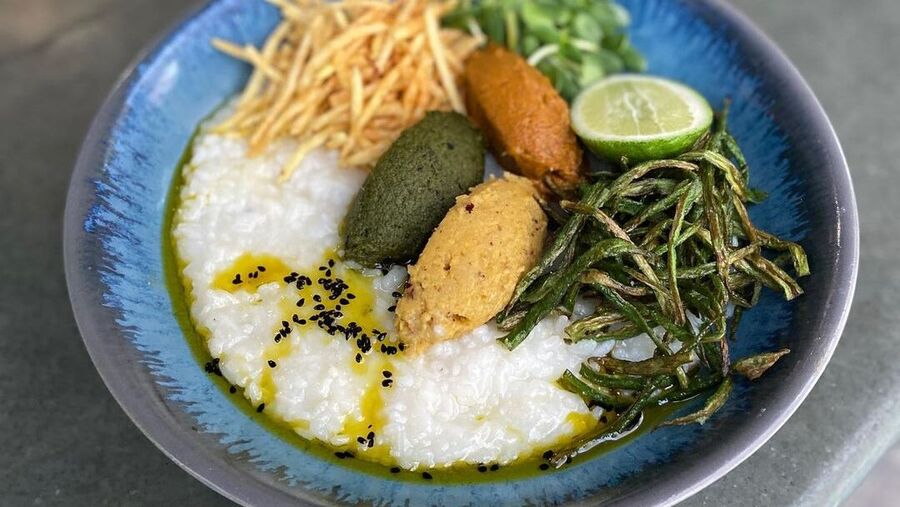
Bata & Bhaat’r Congee Bowl: Phulkopi, Ol & Sheem Bata, Kurkure Bhindi, Aloo Bhaja & Radhatilak Bhaat
@sienna_store/InstagramSamran Huda, home chef, Dastarkhaan
Samran Huda has been serving mouthwatering Bengali and Mughlai dishes through her cloud kitchen Dastarkhaan. When talking about the bhorta, she shared an anecdote.
“I met a person in Dhaka who holds a prestigious job, and found a bowl of red chilli paste that he had. When asked, he said that he cannot have his food without this condiment, and had been having this since childhood. He has an obsession for it and it connects him to his roots. Bhorta also came to the city in this way. People have travelled across the world, and their food has gone with them. This is how bhorta, which is a simple, rustic item, found its place in restaurants.”
Huda added that the simple dish was also comfort food, that was affordable and accessible. It was a no-frills dish made out of necessity, and hence made with the least amount of ingredients. “Once a food of the poor people has now turned tables and has become one of the most coveted dishes.”
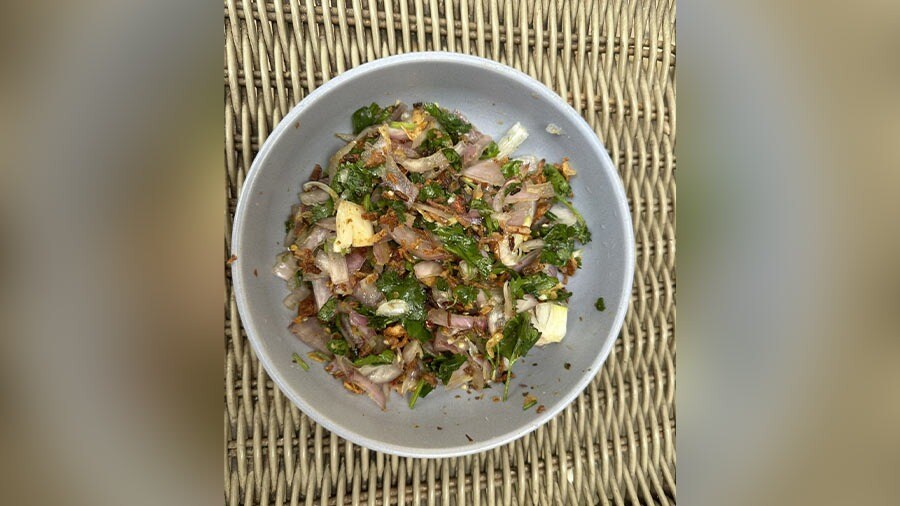
Shutki (dried fish) bhorta
ShutterstockShe makes a lot of bhortas for her clients as well. “They are made depending on the season and availability of vegetables. Apart from the regulars, like alu bhorta, I also make potol bhorta and chingri bhorta.” Shutki (dried fish) bhorta is one of the most popular dishes in Bangladesh, said the home chef.
“Bhortas also have medicinal benefits. For example, a bhorta made by dry roasting kalonji is often given to lactating mothers, or if you have a cold. Post delivery, a bhorta made with turmeric that is used in cooking is often given to the mother. It is cooked with garam masala, mustard oil and onion beresta.”
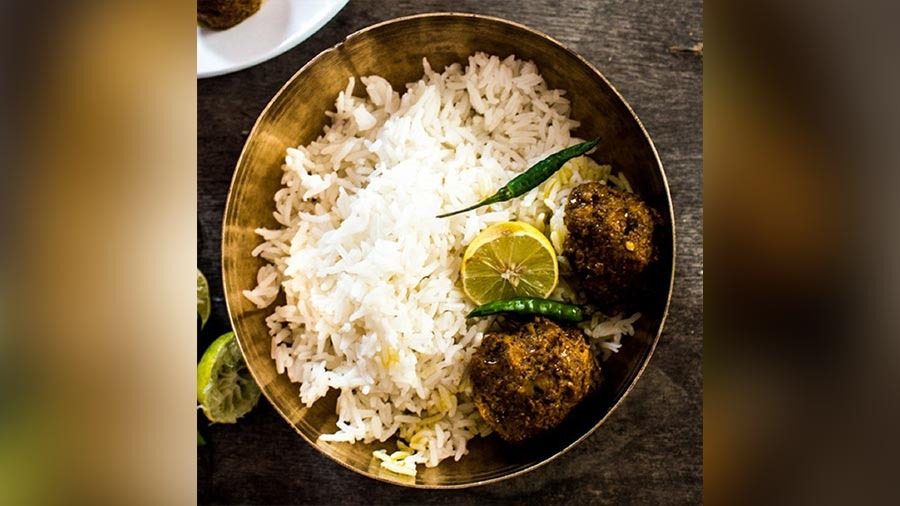
Chingri (prawn) bhorta from Debjani’s kitchen
Courtesy Debjani Chatterjee AlamDebjani Chatterjee Alam, food blogger, Debjanir Rannaghor
Debjani has been writing her food blog for over a decade. She has written about many traditional Bengali food dishes along with recipes from other cuisines too She has written quite a few bhorta recipes too.
The prevalence of different types of bhorta in Bangladesh comes from the biodiversity, said Debjani. Talking about how Bangladesh is the birthplace of the bhorta, Debjani mentioned that in this part of Bengal it is the bhaate, makha or baata, that is usually made, adding the point that this dish is usually dependent on the produce available in the season.
“Bhorta has been part of our food tradition for a long time. Quite interestingly, different variations of bhorta are available in different parts of the world. For example in Pakistan and the Middle East, a popular dish is khagina (or khageena). It is usually served for breakfast and is a type of scrambled egg, which is served with different kinds of bhorta. In Bangladesh, eggs and brinjal are used to make a kind of bhorta, while a popular street food in Tripura is the pork bhorta.”
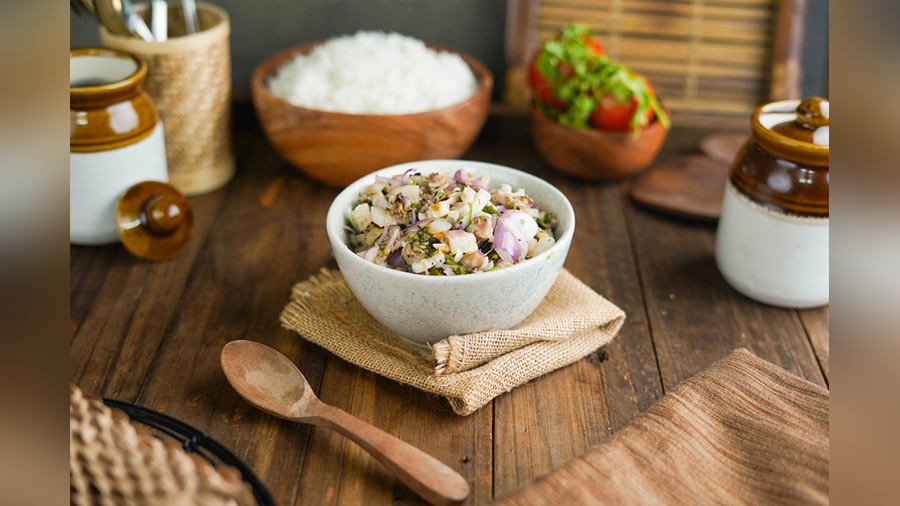
Pork bharta
Shutterstock“It is also basically a dish that can be easily made with almost anything, and is affordable,” she said. Debjani also reminisced about her grandmother. After her grandfather passed, her grandmother would sometimes feed the entire family with bhorta. She didn’t even throw the peels of the vegetables and would make a bhaja out of them. “Bhorta is a dish that can be made with scraps and leftover produce, and small quantities of it can serve and feed many. People have now turned to sustainable eating, especially after Covid. They also want to go back to their roots, especially the eating habits and bhorta is not only tasty, it is also healthy. It is made with minimal spices, few and fresh ingredients.”
The way bhorta is being presented has now attracted food lovers all across the world, added the food blogger. “It has now acquired the position of a delicacy.”



